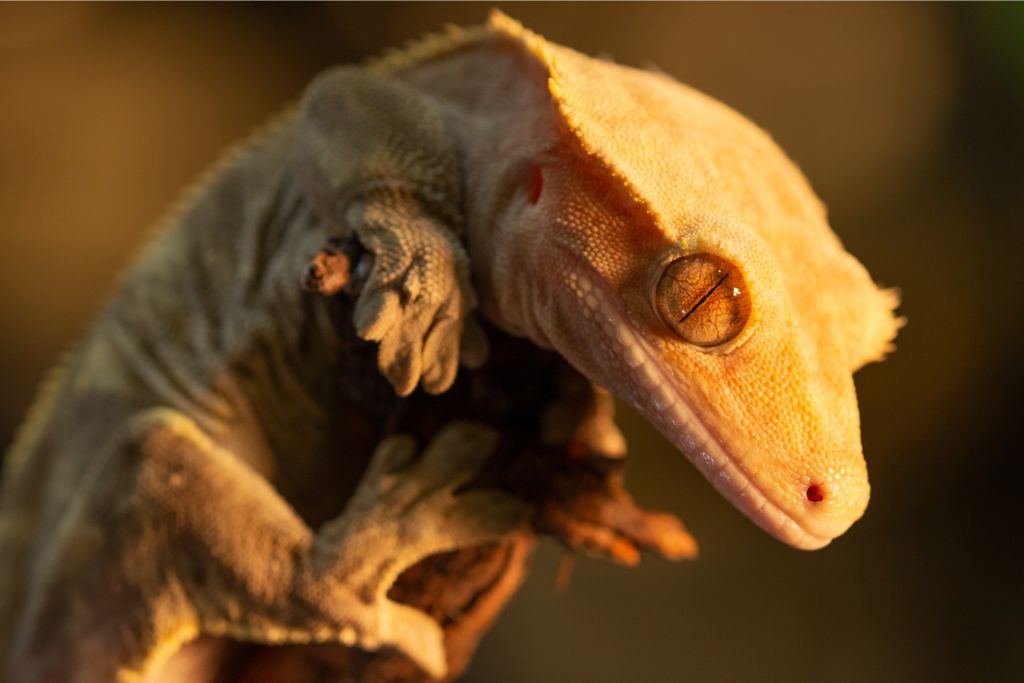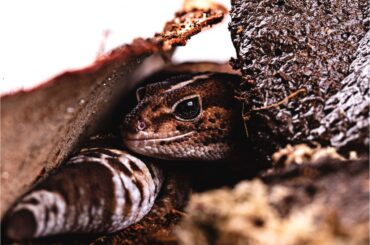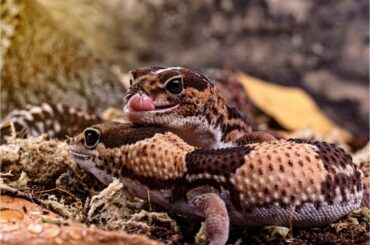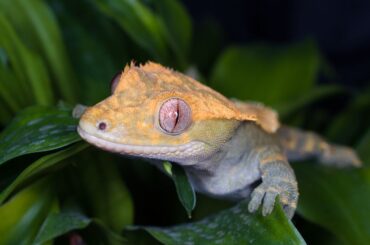Have you ever wondered about the secret world of crested geckos and what makes them tick? Have you ever pondered whether these enchanting creatures need a bit of sunshine in their lives, or is that just a myth? Unravel the mystery of UV light and its role in the health and happiness of our scaly friends.
These little adventurers are not your run-of-the-mill reptiles; they boast some unique qualities that set them apart. With their crested heads, wide, expressive eyes, and the ability to shed their tails when feeling threatened, they’re like the tiny wizards of the rainforest!
The catch is that their native homes are bathed in sunlight. So, do these geckos need UV light in captivity? This article aims to demystify the need for UV light in the lives of crested geckos. So, buckle up, explorers, as we embark on a quest to understand the sunny side of crested gecko care!
Crested Gecko Lifestyle
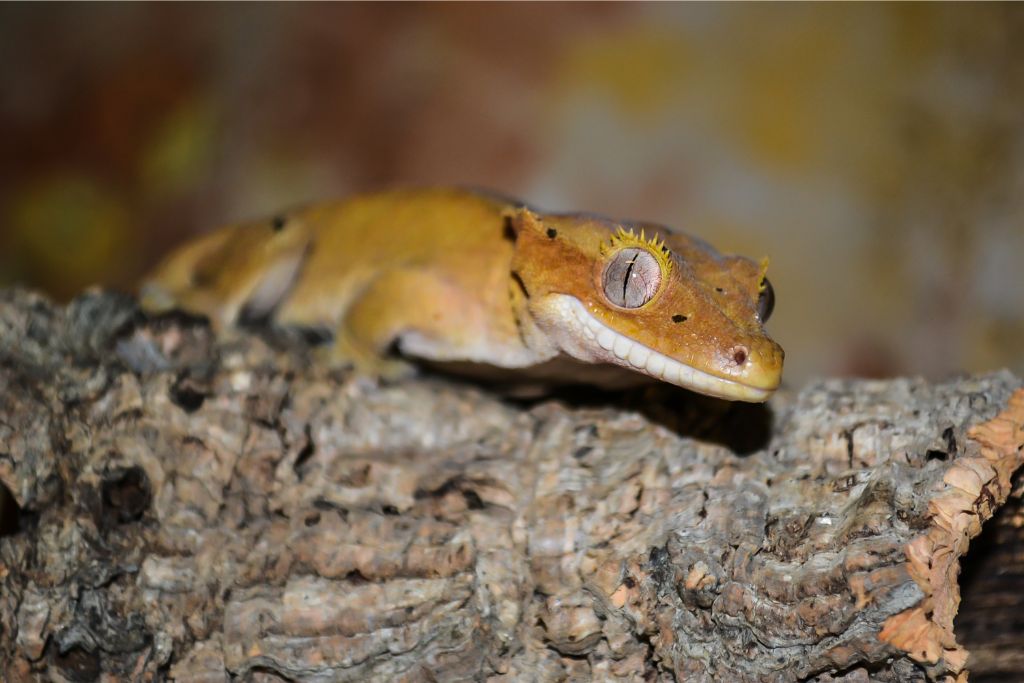
Crested geckos, fascinating nocturnal reptiles from New Caledonia, have distinct traits. Picture a magical twilight dance as these geckos come to life in the evening. They stay in burrows during the day and only come out at dark, dawn, and dusk to find their favorite snacks.
During these mysterious hours, crested geckos hunt skillfully in their natural habitat. Imagine constructing a tropical-themed sanctuary for these unique species in our homes. Warm ambient air isn’t just a luxury; it’s a necessity for their well-being. In captivity, these geckos rely on us to recreate the warm embrace of their native lands.
A temperature-controlled home isn’t just for comfort; it’s essential for their happiness and health. For our crested gecko friends, let’s make our homes as warm and inviting as a tropical paradise!
The Role of Lighting for Crested Geckos
Like all living things, crested geckos need correct lighting to thrive. Providing the right kind of light is essential to mimic their natural habitat and support their overall health. Here are the key roles that lighting plays in the life of these fascinating reptiles:
Natural Day-Night Cycle
In their native environment, crested geckos experience a consistent day-night cycle. Adequate lighting helps recreate this pattern in captivity, allowing them to regulate their internal clock. This helps them establish a routine and positively influences their behavior and activity levels.
Temperature Regulation
Just like you and me, crested geckos enjoy a bit of warmth. Proper lighting, especially with the right balance of heat, ensures that your gecko can bask comfortably. This is vital for their digestion and metabolism, contributing to their happiness and health.
UVB for Calcium Metabolism
Imagine if you had to stay indoors all the time – you’d miss out on that essential vitamin D from the sun. Crested geckos are no different. Adequate UVB lighting enables them to produce vitamin D3, crucial for absorbing calcium. This, in turn, helps maintain strong bones and prevents health issues, like metabolic bone disease.
Promoting Natural Behaviors
When lit well, crested geckos explore their habitat, forage for food, and interact with their surroundings. It’s like giving them a little piece of the wild in their terrarium, ensuring they stay active and engaged.
Reproduction Support
If you plan on expanding your gecko family, proper lighting can play a role in stimulating reproductive behaviors. Mimicking the changing seasons through light variations can signal your geckos that it’s time to mate. This helps ensure a healthy breeding environment for those adorable crested gecko hatchlings.
Crested Gecko UVB: Research and Benefits
Researchers have uncovered the positive effects of exposing juvenile crested geckos to UVB rays in a fascinating study. This study revealed that crested geckos receiving UVB during their early stages had higher levels of vitamin D3.
You might wonder why vitamin D3 is essential for these little geckos. Higher vitamin D3 levels in crested geckos can benefit their health.
Boosting vitamin D3 levels through exposure to UVB rays can be like giving crested geckos a shield against illnesses. Vitamin D3 is like a vitamin that supports their immune system, helping them stay strong and fight off potential invaders. Sunlight can be a health elixir for these geckos, keeping them fit and ready for adventure.
Best UVB for Crested Gecko
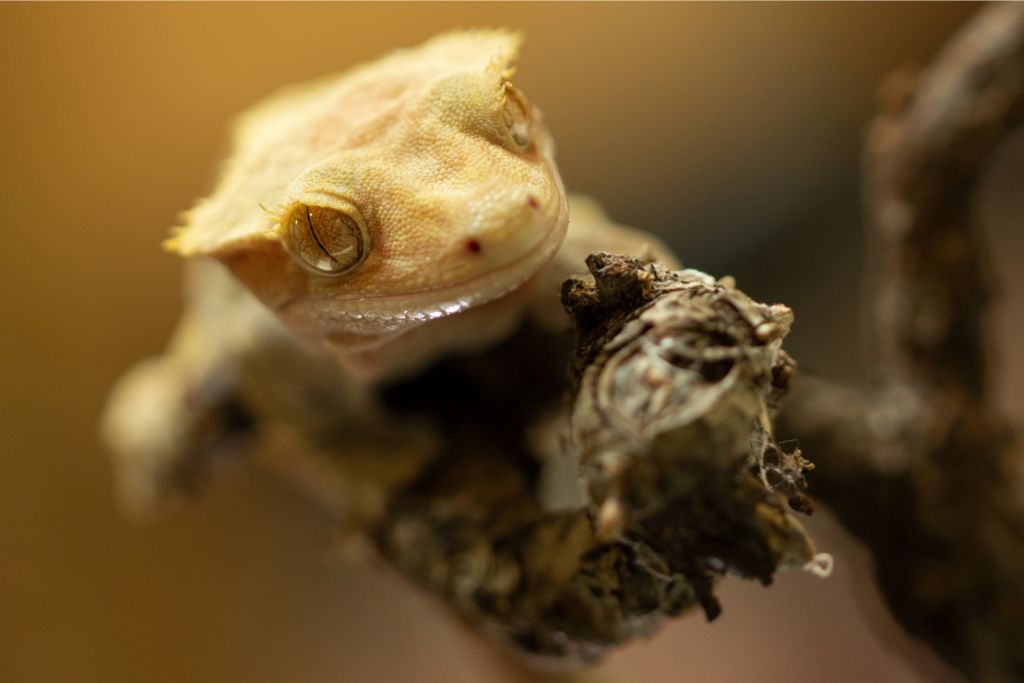
Choosing the proper UVB lighting is crucial when providing the best care for your crested gecko. Here are the best UVB bulbs for crested geckos:
Zoo Med ReptiSun 5.0 Compact Fluorescent Lamp
The Zoo Med ReptiSun 5.0 Compact Fluorescent Lamp is a top choice for crested geckos. This bulb provides UVB rays without being too intense for your gecko’s sensitive eyes. It’s a great option to mimic the natural sunlight conditions your crested gecko would experience in the wild.
Exo Terra Repti-Glo 5.0 Compact Fluorescent Lamp
Another excellent choice is the Exo Terra Repti-Glo 5.0 Compact Fluorescent Lamp. This bulb is designed to emit UVB radiation, promoting proper calcium metabolism in your crested gecko. Its compact size makes it easy to install in your gecko’s terrarium, providing a comfortable and well-lit environment.
Arcadia ShadeDweller Kit
If you’re looking for an all-in-one solution, the Arcadia ShadeDweller Kit is a fantastic option. This package contains a tiny UVB lamp and bracket for easy crested gecko lighting. The ShadeDweller Kit is designed to replicate the lower UVB levels found in the natural habitats of crested geckos.
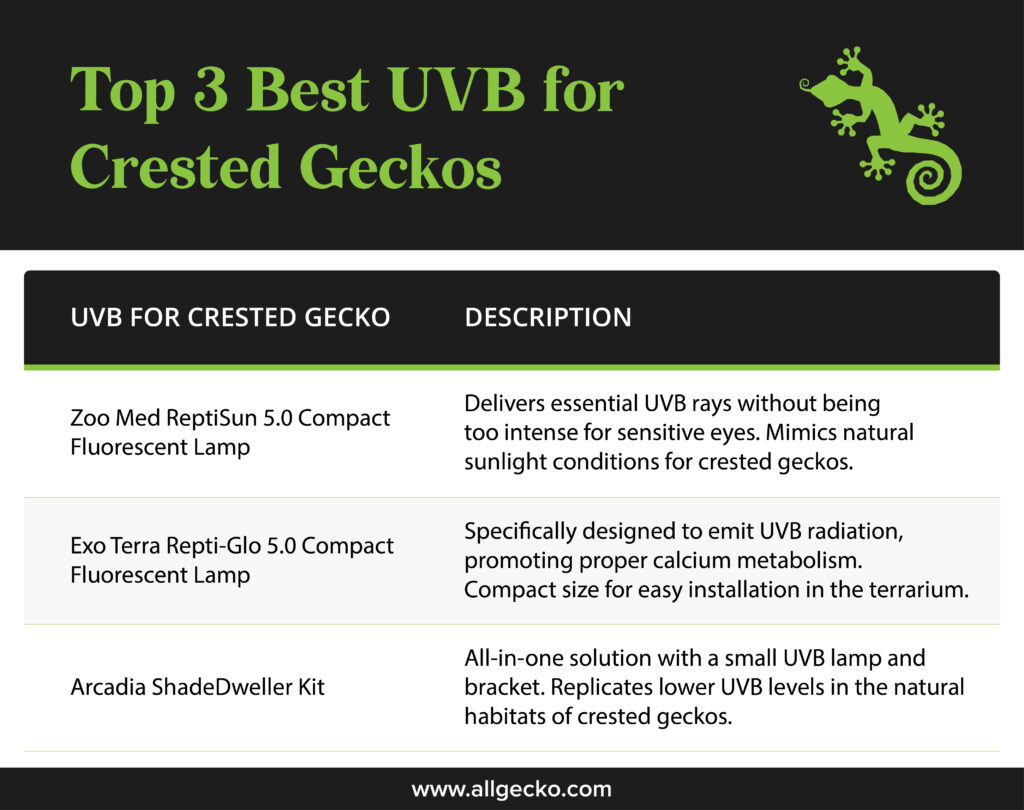
Proper Use of UV Light in Crested Gecko Enclosures
UV light is essential for these delightful creatures, as it helps them metabolize calcium, promoting strong bones and overall well-being. Here are the best practices for UV light in crested gecko enclosures:
Positioning Matters
When setting up your crested gecko’s habitat, place the UV light source within the enclosure at an appropriate distance. Ensure it’s not too close, as this can be harsh on their sensitive skin and eyes. Striking the right balance helps simulate the gentle sunlight they would experience in their natural habitat.
<h3> Create a Day and Night Routine
Establish a consistent day-night cycle by using a timer for the UV light. This mimics the natural rhythm that crested geckos follow in the wild. Offering a 12-hour light and 12-hour dark cycle helps regulate their internal clock, encouraging health and relaxation.
Monitor Bulb Lifespan
Regularly check your UV light bulb’s lifespan, as its effectiveness diminishes over time. To keep your crested gecko getting the suitable UVB rays, replace the bulb as the manufacturer directs.
Setting Up a UVB Lighting System
Are you considering setting up a UVB lighting system for your crested gecko? It’s a fantastic idea! Here are some simple steps to make sure your gecko gets the best care:
Step 1: Gather Your Supplies
First things first, gather all your materials. You’ll need a UVB light fixture, a UVB bulb, and a reliable timer.
Step 2: Choose the Right Spot
Now, think about where your gecko’s favorite hangout spot is. Mount the UVB light above that area, ensuring it’s not too close or too far. It’s all about finding that sweet spot for your gecko to bask comfortably.
Step 3: Set Up the Fixture
Secure the UVB light fixture over your gecko’s habitat. Think of it as creating a little sunspot just for them. Ensure it’s stable and won’t fall – we want your gecko to feel safe and sound!
Step 4: Install the UVB Bulb
Gently screw in the UVB bulb into the fixture. It’s like putting the cherry on top of a delicious sundae – the finishing touch for your gecko’s perfect lighting experience.
Step 5: Don’t Forget the Timer
Geckos, just like us, need a proper day-night cycle. Set up the timer to turn the UVB light on in the morning and off at night. That way, your gecko can enjoy a natural lighting schedule – like their little sunrise and sunset!
Step 6: Monitor and Adjust
Watch your gecko and see how they react to the new lighting. If they seem extra happy or a bit shy, you can adjust the height or the time the light is on. It’s all about tailoring the experience to your gecko’s unique personality.
Conclusion
It’s crucial for all pet owners, especially those fascinated by crested geckos, to embrace responsible ownership. These captivating reptiles rely on us for their well-being, so offering them the best care possible is our duty.
One key aspect is ensuring they bask under the right UVB light. Giving them an ideal place in their terrarium is like giving them a pleasant sunshine hideaway that keeps them healthy and happy.
FAQs
How Much UVB Does a Crested Gecko Need?
Suppose you decide to provide UVB lighting for your crested gecko. In that case, using a UVB light specifically designed for reptiles is essential. Ensure that the UVB light source is manageable, as crested geckos are not adapted to direct, harsh sunlight. Provide hiding spots and areas of shade so your gecko can regulate its exposure to light.
Is Too Much UVB Bad for Crested Geckos?
Yes, excessive UVB exposure can be harmful to crested geckos. They are adapted to low light levels and may experience stress or health issues if exposed to too much UVB radiation.
Do Crested Geckos Need UVB at Night?
No, crested geckos do not need UVB at night. Providing a natural day-night cycle with ambient room lighting is sufficient for their well-being. UVB lighting is generally not recommended during the night.

